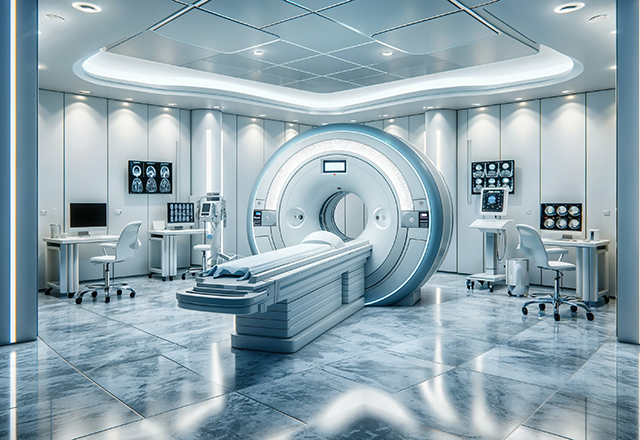Treatment
Deep Experience in a Range of Surgical Techniques

The most important decision about prostate cancer surgery is whether it is the appropriate treatment for a patient. The Prostate Cancer Multidisciplinary Clinic offers expert advice to answer that question. When surgery is advisable, Johns Hopkins offers a wide range of surgical techniques designed to address a patient’s particular situation and better surgical outcomes due to the high levels of experience of the clinic’s surgical team.
A New Organ-Sparing Approach: Focal Therapy
A new therapy for prostate cancer, made possible by advances in medical imaging, targets cancerous tissue within the prostate and destroys only those parts, minimizing urinary and sexual side effects to near zero. Johns Hopkins is unique in offering a variety of minimally invasive focal therapy approaches — including using high-voltage electrical pulses, high-frequency sound waves, heat or freezing — to destroy prostate cancer while preserving healthy prostate tissue. Dr. Arvin George, a Johns Hopkins urologic surgeon and pioneering researcher in the field of focal therapy, said the most important challenge in administering the therapy is determining whether it is appropriate for a certain patient and, if so, which type of focal therapy is best. George said that with Johns Hopkins’ excellent imaging program and meticulous treatment follow-up, 30 percent of patient with prostate cancer could be eligible for focal therapy.
Prostatectomy
Prostatectomy, in which the prostate gland is removed, can occur through an incision made either in the lower abdomen or, less commonly, in the perineum between the scrotum and the anus.
Learn more about Prostatectomy.
The Latest Radiation Technologies

Radiation therapy for prostate cancer has advanced significantly in recent years, with new types of radiation, more effective treatments, shortened treatment duration and fewer side effects. As with other treatments for prostate cancer, it is important to look for radiation treatment at institutions that have experts specialized in offering all of the best treatments available. Centers such as Johns Hopkins’ Prostate Cancer Multidisciplinary Clinic offer the benefit of vast experience with radiation therapies, including through clinical trials that advance care, advantages that often translate into better outcomes and fewer side effects.
Chemotherapy
Chemotherapy refers to any type of therapy that uses chemicals to kill or halt the growth of cancer cells. While chemotherapy used alone is unlikely to cure prostate cancer, it may provide some benefits to patients.
Learn more about Chemotherapy for prostate cancer.
Immunotherapy for Prostate Cancer
Immunotherapy for prostate cancer works by helping a patient’s own immune system fight back against cancer cells.
Learn more about Immunotherapy for prostate cancer.
HEAT Trial Neoadjuvant Study Information
Active Surveillance: Determining When to Treat Versus When to Watch
Because certain prostate cancers grow very slowly, your doctor might determine that it’s not likely to present a significant threat to you. This is particularly true if a prostate cancer is localized, meaning it hasn’t spread beyond the prostate, and is slow-growing, meaning it presents an extremely low risk of causing symptoms or spreading to other organs.
If that’s the case, you and your doctor can discuss getting regularly tested instead of undergoing treatment right away. We call this approach active surveillance. By not rushing into treatment for a cancer that may not cause you any harm, this approach helps many men avoid treatment-related side effects. At Johns Hopkins, this approach has been used for more than 25 years for appropriately selected patients.
Active surveillance, or active monitoring, means your doctor will monitor you closely, watching to see how the cancer progresses, if at all. To monitor a low-risk prostate cancer, someone on active surveillance could undergo several tests:
PSA test : Twice a year. This blood test, commonly used to screen for prostate cancer, measures how much prostate-specific antigen (PSA) is in your blood.
Digital rectal exam: Once a year (A digital rectal exam is done with the doctor’s finger to palpate the prostate for any change).
Prostate MRI scan : Every 2 to 3 years (MRI is used to detect and then monitor cancer growth during active surveillance).
Biopsy: Every 1 to 5 years (depending on results of the digital rectal exam and MRI)
Dr. Christian Pavlovich, director of Johns Hopkins’ Prostate Cancer Active Surveillance Program, says, “At Johns Hopkins we have been monitoring men with prostate cancer on active surveillance since 1995 and have enrolled more than 2,000 men since then.
"With proper patient selection and a healthy relationship between patient and provider, where the surveillance plan is outlined and followed, we have shown that this approach is extremely safe. While no approach to cancer is 100% safe, we are trying very hard to continue to treat only men with aggressive cancers, since curative treatments can have significant side effects”.
